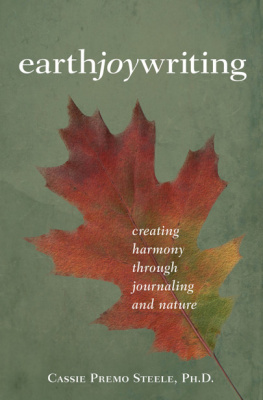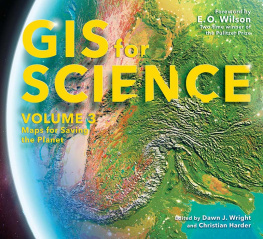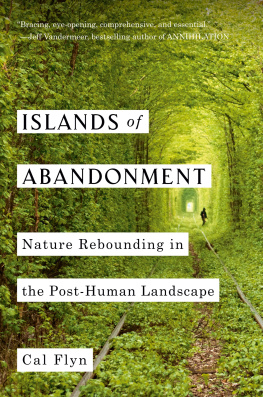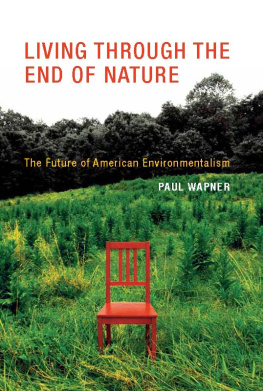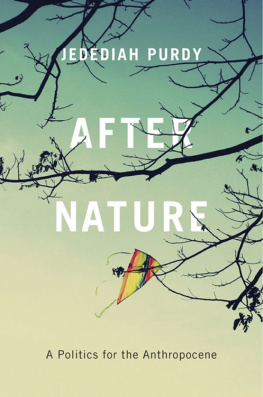The author and publisher have provided this e-book to you for your personal use only. You may not make this e-book publicly available in any way. Copyright infringement is against the law. If you believe the copy of this e-book you are reading infringes on the authors copyright, please notify the publisher at: us.macmillanusa.com/piracy.
Fort Braggs Glass Beach is the most popular attraction on the Northern California coast. It receives more visitors than the Lost Coast, through which steep trails navigate cloud forests, waterfalls, and ocean panoramas. It gets far more traffic than the Mendocino Coast Botanical Gardens and Mendocino Headlands State Park. From the parking lot off Glass Beach Drive, tourists descend a steep staircase between graywacke cliffs to photograph a narrow cove that sparkles with turquoise and brown and ruby shards, buffed and rounded by the surf. Posted signs beg visitorsa couple of thousand a day during the summernot to pocket the glass but they cant help themselves.
In 2012, J. H. Cass Forrington, a retired sea captain and the owner of the nearby International Sea Glass Museum, which displays more than three thousand poached pieces, led a campaign to replenish the beach with tons of broken glass. Forringtons argument rested on an ecological claim. Because the sea glass, which created habitat for microscopic marine life, had integrated into the local ecosystem, it deserved the same protections granted to the coast redwood, the mountain beaver, the red-legged frog.
The California Department of Fish and Wildlife is responsible for protecting and maintaining natural communities for their intrinsic and ecological value and their benefits to people. The fate of Glass Beach hung on the definition of natural. Forrington argued that California was legally bound to dump more glass on the sand. To say the glass is not natural is simply wrong, he wrote, in a manifesto littered with an unassailable profusion of quotation marks. Because of the damage we can do to an overall habitat, we tend to think of ourselves as being somehow un-natural, and outside of nature, but we are an integral part of nature and we can also do great good.
The great good to which Forrington referred dates to 1949, when the beach was designated for use as a landfill. The tons of glass pebbles and ellipsoids that littered the cove were the remnants of beer bottles, taillight lenses, and Tupperware. For the next two decades the beach was known to locals as the Dumps. The only way to regain the beachs natural beauty, wrote Captain Forrington, was to bury it every year under a few more tons of trash.
In the end the Department of Fish and Wildlife was unpersuaded by Captain Forringtons definition of nature; it declined to intervene. Forrington would not be so easily defeated, however. In defiance, he continued to sell plastic bags of pre-tumbled glass to tourists who lugged them down the wooden stairs and emptied them onto the sand. Captain Forrington believed he was doing his part to save nature, or at least nature.
Long after the last copy of the King James Bible has disintegrated and the Venus de Milo has gone to powder, the glory of our civilization will survive in misshapen, neon-flecked rocks called plastiglomerate: compounds of sand, shells, and molten plastic, forged when candy bar wrappers and bottle caps burn in campfires. Additional clues will be found in the ubiquity of cesium-137, the synthetic isotope produced by nuclear detonations; a several-thousand-year diminution in calcium carbonate deposition, the consequence of ocean acidification; and glacial ice cores (should glaciers remain) registering a dramatic spike of atmospheric carbon dioxide. Future anthropologists might not be able to learn everything there is to know about our culture from these geological markers but it will be a good start.
In the beginning, human beings tended to view nature as a mortal enemywith wariness, dread, and aggression. The war began before we had even bothered to name our enemy. Already in the earliest literature, the assault is well under way, the bellicosity raw, the motives unquestioned. In The Lord to the Living Ones Mountain, Gilgamesh, terrified of death, decides he must perform a heroic feat to achieve immortality. As he can imagine nothing more honorable than the destruction of a virgin forest, Gilgamesh travels to the sacred Mountain of Cedar, beheads the demigod who defends it, and razes the forest to stubble, reserving the grandest tree for use as a gate to his city.
About seventeen centuries later, in Platos Phaedrus, Socrates, reluctant to venture outside Athens city walls, declares, I am a lover of learning, and the outdoors and trees have never taught me anything, whereas in the city there are people and they do teach me. Aristotle is more direct in Politics: Nature has made all things specifically for the sake of man. In the Old Testament, the wilderness is a godless domain, the anti-Eden. As in: He led you through the vast and dread-ful wilderness, that thirsty and waterless land, with its venomous snakes and scorpions.
Wilderness: from the Old English -ness + wild + deor, the place of wild beasts. Samuel Johnson defined it as a tract of solitude and savageness. William Bradford, a founder of Plymouth Colony, reacted to the New World with horror, calling it hideous & desolate full of wild beasts & wild men. The most widely collected work of the Enlightenment, Comte de Buffons thirty-six-volume Natural History, proliferates with words like grotesque, nauseous, pestilential, terrible, and filth.
Nature invited subjugationfor its own good. The American jurist James Kent extended this conceit to the human beings who had lived for millennia in harmony with the land as he sought to construct a legal basis for seizing territory from Native Americans. The continent, Kent argued, was fitted and intended by Providence to be subdued and cultivated, and to become the residence of civilized nations. The gospel of Nature was a license to dominate, brutalize, and pillageand feel proud of it.
Some of these examples come from Roderick Nashs totemic history, Wilderness and the American Mind, which describes how finally, in the nineteenth century, the terms of humanitys relationship with nature flipped. Scientists and philosophers began to question the premise that nature was a threat to civilization. Theyd had it backward: civilization was a threat to nature. It had become obvious that humanity was winning its thousands-year war against nature in a rout. It was a costly victory, however. The prize was civilizational collapse.
This understanding was first articulated by Alexander von Humboldt, who was born in 1769, during the era in which human beings stopped fearing nature and took pride in their ability to master it. It was the age of the steam engine, the smallpox vaccine, the lightning rod. Timekeeping and measuring systems became standardized; the blank spaces remaining on world maps were shaded in. Even before Humboldt began his global tour, analyzing everything from wind patterns and cloud structures to insect behavior and soil composition, he intuited that Earth was one great living organism where everything was connected. It is commonplace today to speak of the web of life, but the concept was Humboldts invention. It followed that the fate of one species might have cascading effects on others. Humboldt was among the first to warn of the perils of irrigation, cash crop agriculture, and deforestation. By 1800 he had come to realize that the damage wreaked by industrial civilization was already incalculable.




